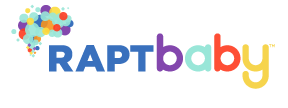Using Science to Make Sleep
Smarter for Your Child
Why it matters what a baby hears during sleep and how we can help.
How babies learn language
When babies are born, they have no idea what language they should be learning. To figure that out, their brains are primed to focus on sound variations and identify the ones that occur most often. Those will be the acoustic cues (properties of speech like changes in timing, frequency, pitch, or duration) that distinguish the phonemes of their native language – the basic elements of sound that differentiate one word from another, for example, in English, the B and P sounds in pad and bad. As the brain focuses on these phonemes, it forms connections among the neurons that fire together to process each one of them.
If all goes well, by the end of the first year, a child’s brain will have created the neuronal connections required to respond to all its native language phonemes, creating an acoustic map that allows the child to quickly and accurately discriminate phonemes in incoming language streams, recognize phoneme patterns that make words, and finally attach meaning to those words.
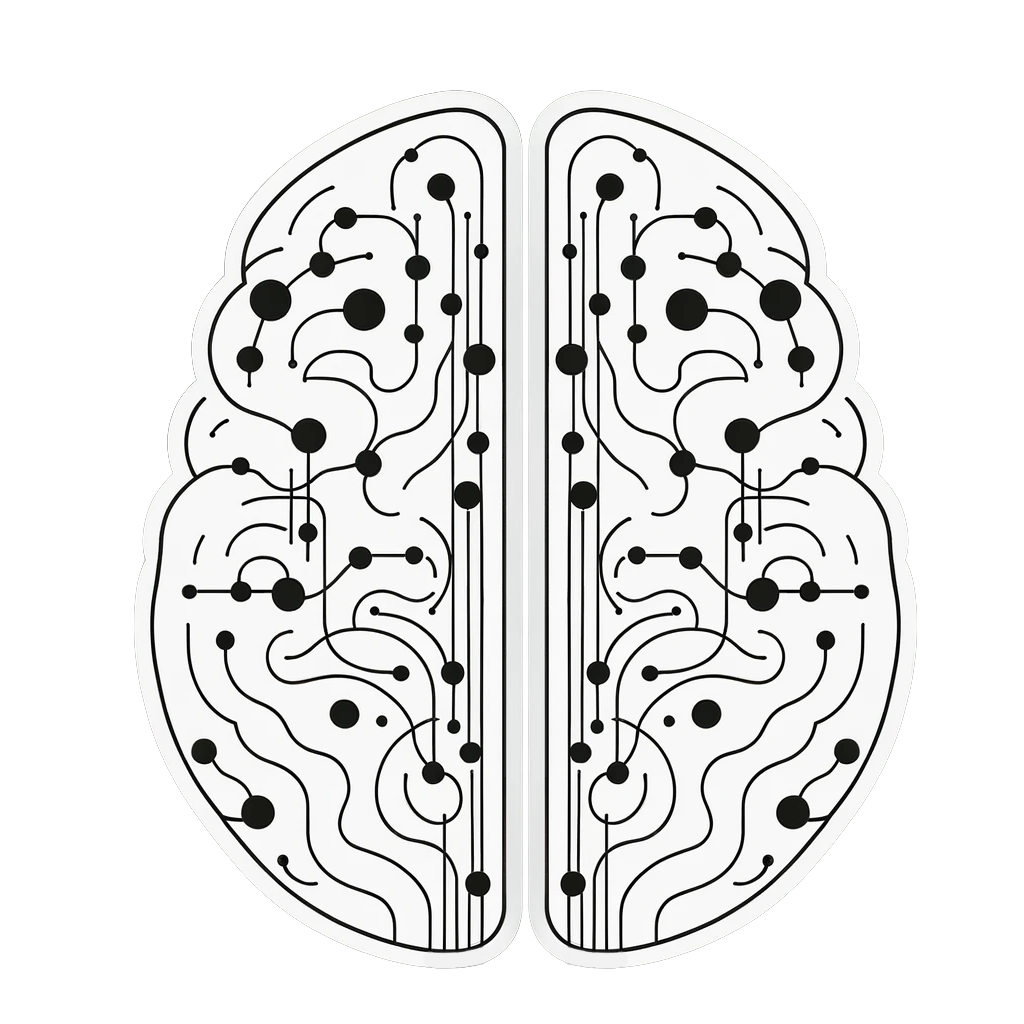
How sound during sleep affects language development
The development of neuronal connections in response to external experiences like sound is called plasticity. Regardless of when the “experience” may have occurred, most of this shaping and reshaping of the brain, including the formation of the acoustic map and later language networks, happens during sleep. Additionally, during sleep, young children continue to respond to sound. Their brains’ auditory and language areas not only remain active in processing acoustic stimuli that support language development, but they need that variation to keep them attentive and engaged in sorting through sounds that might be language and continuing to build and refine their language networks.
Conversely, failure to receive that critical input may lead to fuzzy acoustic maps that negatively affect a child’s ability to learn language as well as cognitive activities that build on language such as literacy and even the organization of memories.
How sound during sleep affects language development
The development of neuronal connections in response to external experiences like sound is called plasticity. Regardless of when the “experience” may have occurred, most of this shaping and reshaping of the brain, including the formation of the acoustic map and later language networks, happens during sleep. Additionally, during sleep, young children continue to respond to sound. Their brains’ auditory and language areas not only remain active in processing acoustic stimuli that support language development, but they need that variation to keep them attentive and engaged in sorting through sounds that might be language and continuing to build and refine their language networks.
Conversely, failure to receive that critical input may lead to fuzzy acoustic maps that negatively affect a child’s ability to learn language as well as cognitive activities that build on language such as literacy and even the organization of memories.

How we support language development (and sleep!)
Smarter Sleep provides an enriched sound environment designed to give babies the rest they need while supporting the critical language development that should be happening during sleep. Its base soundtracks are composed to encourage the alpha and delta brainwaves that promote relaxation and deep sleep, but each also incorporates subtle pre-linguistic “acoustic cues” that mimic the tiny transitions that distinguish phonemes from one another in any language.
By hearing these cues during sleep, the brain can become better at recognizing such transitions to help form the acoustic map. That experience also helps the brain identify similar variations that were heard during awake states as meaningful information that it should use to form acoustic map connections as well as the language networks that are created through the first five or so years of life.

Listen for Yourself!
(Below is the “Classical-A” music track from the Smarter Sleep sound machine)
Base Track
Composed with frequencies, tempos, and complexity that encourage alpha brain waves for relaxation and delta waves for deep sleep
Acoustic Cue Sequence
Patented and algorithmically structured prelinguistic sound transitions that keep the brain engaged in activity needed to set up its acoustic map and language networks
Combined Track
Base track with embedded audio cue sequence
Music Track
Acoustic Cues
Music Track + Cues
Why we use acoustic cues
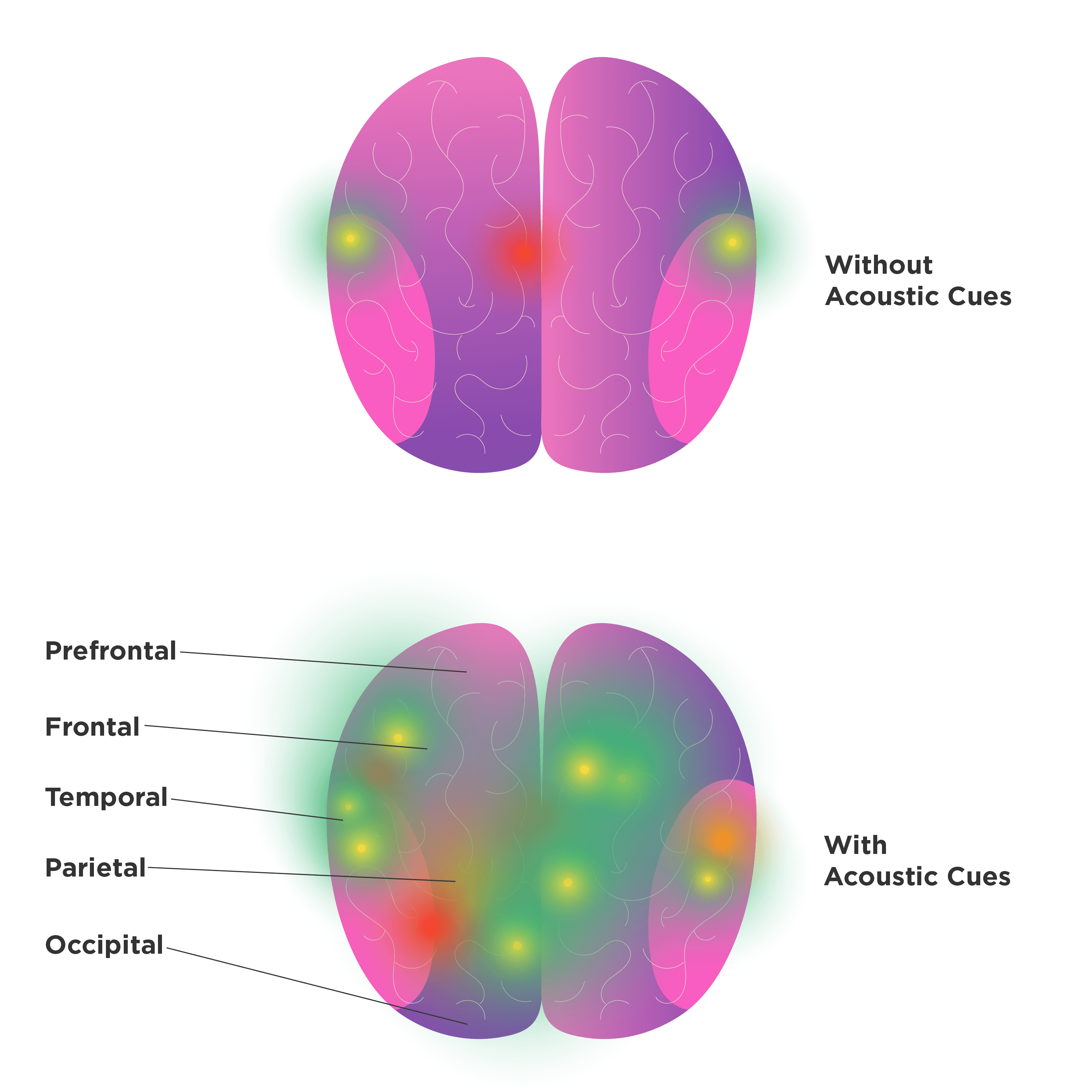
As noted, the acoustic cues that the young brain uses to identify phonemes are pre-linguistic – brief changes in sounds that differentiate phonemes from each other, no matter what language they comprise. Said another way, these cues are the building blocks of every language in the world, supporting the creation of the acoustic map for whatever native language (or languages) dominates the child’s environment. By incorporating acoustic cues in Smarter Sleep’s tracks, we can gently stimulate areas of the brain relevant to language that are meant to be active during sleep. This activation helps set up the acoustic map and also engages areas of the brain that use those salient sound transitions to evaluate stored images and memories and use them to develop and refine language networks.
Importantly the acoustic cues add a unique dimension to the way the brain reacts to environmental sounds. Whether sleeping or awake, the brain, of course, responds to a soothing soundtrack, with that response seen mainly in the hearing part of the brain, the acoustic cortex. The addition of these subtly changing acoustic cues involves other parts of the brain that comprise the developing language network including the prefrontal, frontal, temporal, parietal, and occipital areas. EEGs of sleeping babies show how these acoustic cues differentially engage and connect these brain areas that are relevant to language development as compared, for example, to music or nature sounds alone. In short, Smarter Sleep’s acoustic cues support and enhance what the brain is designed to do naturally—a really good thing for later language and cognitive growth.
Listen for Yourself!
(Below is the “Classical-A” music track from the Smarter Sleep sound machine)
Base Track
Composed with frequencies, tempos, and complexity that encourage alpha brain waves for relaxation and delta waves for deep sleep
Music Track
Acoustic Cue Sequence
Patented and algorithmically structured prelinguistic sound transitions that keep the brain engaged in activity needed to set up its acoustic map and language networks
Acoustic Cues
Combined Track
Base track with embedded audio cue sequence
Music Track + Cues
Why we use acoustic cues

As noted, the acoustic cues that the young brain uses to identify phonemes are pre-linguistic – brief changes in sounds that differentiate phonemes from each other, no matter what language they comprise. Said another way, these cues are the building blocks of every language in the world, supporting the creation of the acoustic map for whatever native language (or languages) dominates the child’s environment. By incorporating acoustic cues in Smarter Sleep’s tracks, we can gently stimulate areas of the brain relevant to language that are meant to be active during sleep. This activation helps set up the acoustic map and also engages areas of the brain that use those salient sound transitions to evaluate stored images and memories and use them to develop and refine language networks.
Importantly the acoustic cues add a unique dimension to the way the brain reacts to environmental sounds. Whether sleeping or awake, the brain, of course, responds to a soothing soundtrack, with that response seen mainly in the hearing part of the brain, the acoustic cortex. The addition of these subtly changing acoustic cues involves other parts of the brain that comprise the developing language network including the prefrontal, frontal, temporal, parietal, and occipital areas. EEGs of sleeping babies show how these acoustic cues differentially engage and connect these brain areas that are relevant to language development as compared, for example, to music or nature sounds alone. In short, Smarter Sleep’s acoustic cues support and enhance what the brain is designed to do naturally—a really good thing for later language and cognitive growth.
Why we don’t use white noise
White noise consists of equal intensities of all frequencies of the audible spectrum so it lacks the variability and acoustic cues the brain is expecting and needs to attend to even during sleep. Studies on animals exposed to white noise and infants in suboptimal auditory environments highlight the potential for impaired language development if the exposure to the stimuli that support the development of well-formed acoustic maps and language networks is inadequate. Because RAPTbaby™ wants to support brain development and sleep, white noise is not a good option for us. The same concerns hold for other “noises” like pink noise and brown noise which are different frequency combinations but also lack variation.
White Noise
Rain Sounds
Sometimes sounds like nature or meditation tracks are referred to as “white noise” even though they do have variation and, as a result, do not pose the same risk to language development as white noise.
Our Chief Scientist

Dr. Benasich explains Smarter Sleep to the mother of a baby in the NICU at UPMC-Harrisburg
Dr. April Benasich
Dr. April Benasich, RAPT Ventures’ Chief Scientist and co-founder, is the country’s first endowed chair in developmental cognitive neuroscience and a pioneer in research on early language development. As the Elizabeth H. Solomon Professor of Developmental Cognitive Neuroscience, director of the Infancy Studies Laboratory at the Center for Molecular and Behavioral Neuroscience, and Professor of Neuroscience at Rutgers University – Newark, Dr. Benasich has focused on exploring the foundational stages of development, where she believes that the immense plasticity of young brains provides the greatest potential for cognitive and neural enhancement through supportive auditory interventions.
Dr. Benasich and her co-founders established RAPT Ventures to translate decades of neuroscience research into practical applications that can benefit individuals at every stage of life. RAPT Ventures’ first product, the RAPTbaby™ Smarter Sleep sound machine, was born of a desire to support the neurological development of infants by providing an enriched auditory environment that caters to sleep as well as the language development that occurs during sleep. Through Smarter Sleep and the products to follow, Dr. Benasich is realizing her vision of shaping a future where the benefits of neuroscience research are accessible to families everywhere, offering new paths for children and adults to achieve and maintain their full cognitive potential across their lifespans.
Our Scientific Advisory Board

Dr. Stephen Kosslyn
President of Active Learning Services & Founder/Chief Academic Officer of Foundry College
Before taking on his responsibilities at Foundry, an online college designed to provide automation-resistant skills, Dr. Kosslyn served as Founding Dean of the Minerva Schools at the Keck Graduate Institute, Director of the Center for Advanced Study in the Behavioral Sciences at Stanford University, and Chair of the Department of Psychology as well as Dean of Social Sciences at Harvard University.
Show More
He received his BA from UCLA and a PhD from Stanford, both in psychology and, among other honors, the Cattell Award, a Guggenheim Fellowship, and election to Academia Rodinensis pro-Remediatione, the Society of Experimental Psychologists and the American Academy of Arts and Sciences.

Dr. Nina Kraus
Hugh Knowles Professor of Neuroscience at Northwestern University
As Director of the Auditory Neuroscience Laboratory which focuses on the biology of auditory learning, Dr. Kraus was one of the first to show that the adult nervous system has the potential for reorganization following learning and, through a series of studies involving thousands of research participants, her research has found that our lives in sound shape auditory processing.
Show More
She received a BA from Swarthmore College and a PhD in Neuroscience from Northwestern, has served on the advisory or editorial board of numerous scientific publications and currently is a member of the Research Committee of the American Hearing Research Foundation.

Dr. Michael Merzenich
Over the course of his career, including his two decades at Brain HQ, a leading US provider of brain training software and services, Dr. Merzenich has published more than 250 scientific papers, received numerous awards and prizes including the Russ Prize, Ipsen Prize, Zülch Prize, Thomas Alva Edison Patent Award and Purkinje Medal. In 2016, he was awarded one of the world’s top neuroscience honors, the Kavli Prize, for his achievements in the field of brain plasticity.
Show More
Grantee of nearly 100 patents, he and his work have been highlighted in hundreds of books about the brain, learning, rehabilitation, and plasticity. A member of both the National Academy of Medicine and National Academy of Science, he earned his BS at the University of Portland and his PhD at Johns Hopkins.
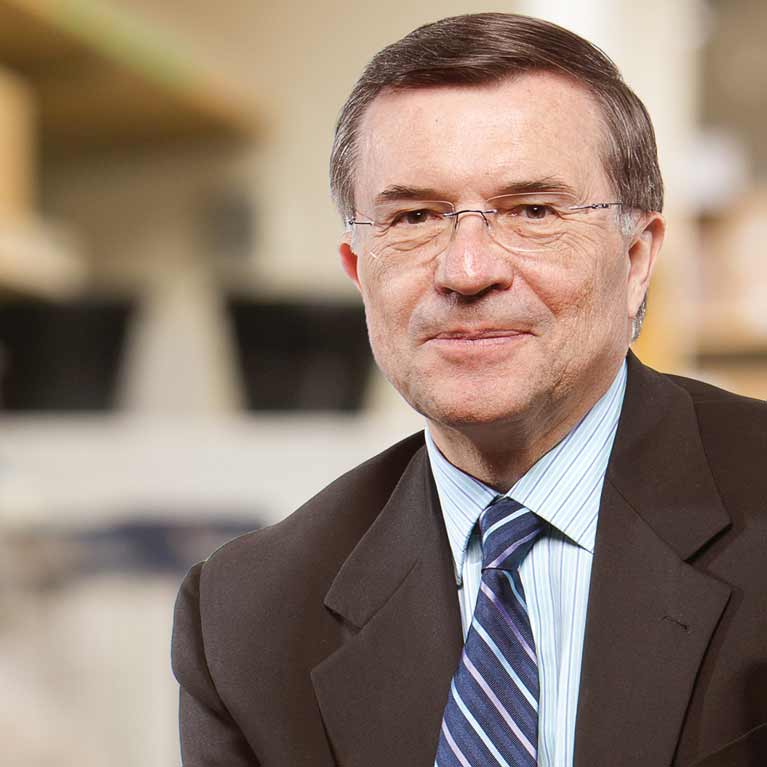
Dr. Terrence Sejnowski
Francis Crick Chair, Salk Institute for Biological Studies
Winner of the 2024 Brain Prize, the world’s top neuroscience honor, for his “seminal contributions to [the] understanding of the principles that govern the brain’s structure, dynamics and the emergence of cognition and behaviour,” Dr. Sejnowski is also head of the Computational Neurobiology Lab at UCSD and Co-Director of the Institute for Neural Computation and the NSF Temporal Dynamics of Learning Center.
Show More
He is a fellow of the American Academy of Arts and Sciences and, as a member of the National Academy of Engineering, the National Academy of Medicine, and the National Academy of Sciences, is one of only 12 living individuals elected to the three National Academy branches. Dr. Sejnowski received his BS from Case Western Reserve University and PhD from Princeton University and has published 12 books and more than 500 scientific papers.
Want to learn more?
Smarter Sleep is based on decades of peer-reviewed, clinical research on: infants’ development of neuronal networks to support language acquisition and processing; the importance that salient acoustic cues play in that process; and the negative impact that auditory environments lacking such cues might have on language development, particularly during sleep.
To learn more, download our white paper
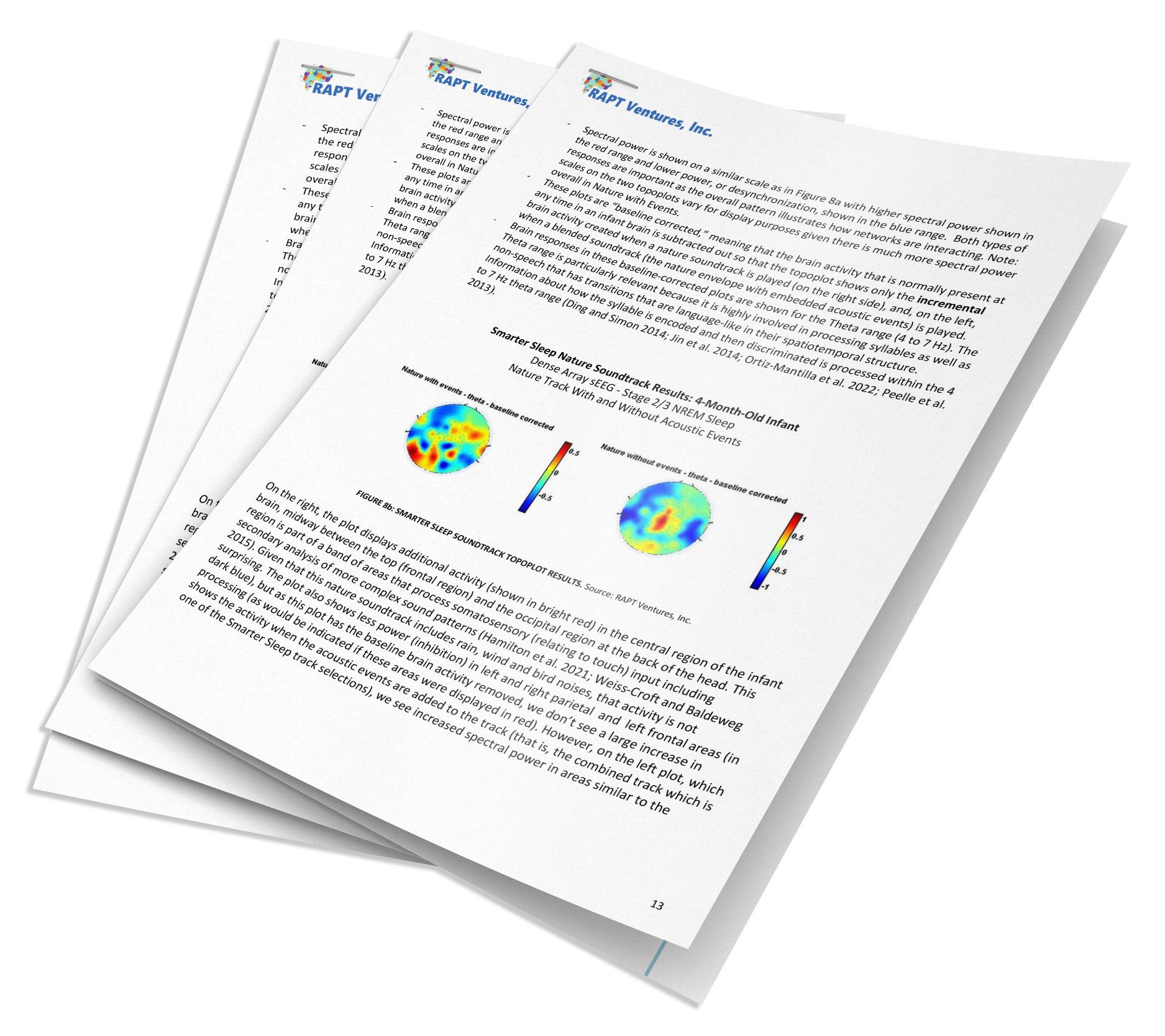

Want to learn more?
Smarter Sleep is based on decades of peer-reviewed, clinical research on: infants’ development of neuronal networks to support language acquisition and processing; the importance that salient acoustic cues play in that process; and the negative impact that auditory environments lacking such cues might have on language development, particularly during sleep.
To learn more, download our white paper
